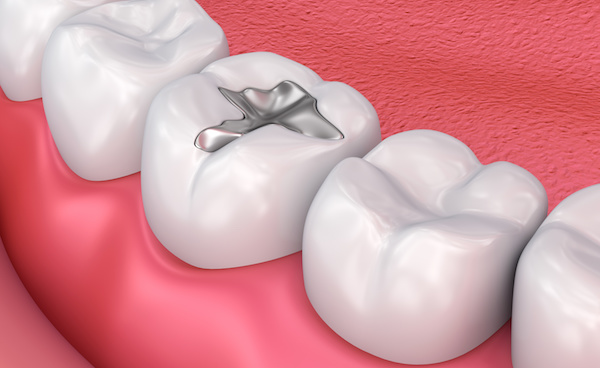
Amalgam vs Composite Fillings: Choosing a Dental Filling Material
If you haven’t needed a filling in a while, you may be surprised to discover that you now have options when it comes to the type of material that is used for your dental procedure. You will have the opportunity to choose between ceramic composite fillings and amalgam fillings. Before you make a decision regarding which type of filling you want, it is important to learn more about both amalgam and ceramic composite fillings.
Taking a Closer Look at Ceramic Dental Fillings
Ceramic composite fillings, sometimes known as resin composite fillings, are made up of a combination of materials, usually plastic and ceramic, to create a natural tooth color filling. These natural looking fillings can be used to treat cavities and tooth decay in any tooth in the mouth whether it is in the front or the back.
Some advantages of ceramic composite fillings include:
- Fillings naturally blend in with your surrounding teeth so there is no visible sign of dental work having been performed
- No metals or mercury are used to create the filling so there are fewer health risks involved with composite fillings
- A decreased chance of experiencing post-treatment tooth sensitivity
- Making it easier to see signs of tooth decay in the future as the tooth decay stands out against the white composite fillings
- The decreased likelihood that the tooth will crack
Some disadvantages of ceramic composite fillings include:
- Cost as composite fillings are more expensive than amalgam fillings
- Composite fillings tend to wear out faster and need to be replaced sooner than amalgam fillings
- Dental insurance may not cover composite fillings that need to be placed in the back teeth
Taking a Closer Look at Amalgam Fillings
Amalgam fillings, or silver fillings, are the type of fillings you got if you needed to have a cavity treated 20 or 30 years ago. They are made up of a blend of metals such as mercury, silver, copper, and tin and, in the past, used to be the only option for fillings.
Some advantages of amalgam tooth fillings include:
- Strong and sturdy enough to hold up while you chew or grind your teeth
- Less expensive than composite fillings
- Long-lasting as amalgam fillings can often hold up for 5, 10 or even 15 years before needing to be replaced
- Often covered by most insurance plans
Some disadvantages of amalgam tooth fillings include:
- Silver material is extremely visible which makes them a poor choice for cavities in the front of the mouth
- Filling material make leak which causes staining in the surrounding teeth
- Future tooth decay may not be visible around the amalgam fillings as the staining looks similar to tooth decay
- Health risks and illnesses may be associated with the use of amalgam fillings
- For several days after the placement of an amalgam filling, there are restrictions on what you can and cannot eat or drink
- Teeth may become extremely sensitive to hot and cold in the area of the filling or the area surrounding the filling
Which Filling Material is Right for Me?
Every individual is different when it comes to which type of dental filling is right for them. Before deciding which type of filling to have done, you must think about your budget, current health issues, and location of the filling. These factors will determine what type of filling is right for your individual situation.
Speak with a Melbourne Dentist to Explore Your Options
Dr. Brazdo of Artistic Touch Dentistry in West Melbourne, Florida can help you explore your options when it comes to dental fillings. During your consultation with her, she will provide you with treatment recommendations that address your individual needs. She will also answer any questions you may have or address any concerns you may have about dental fillings.
Call the office of Artistic Touch Dentistry today to schedule an appointment with Dr. Brazdo to learn more about your options for dental fillings.

